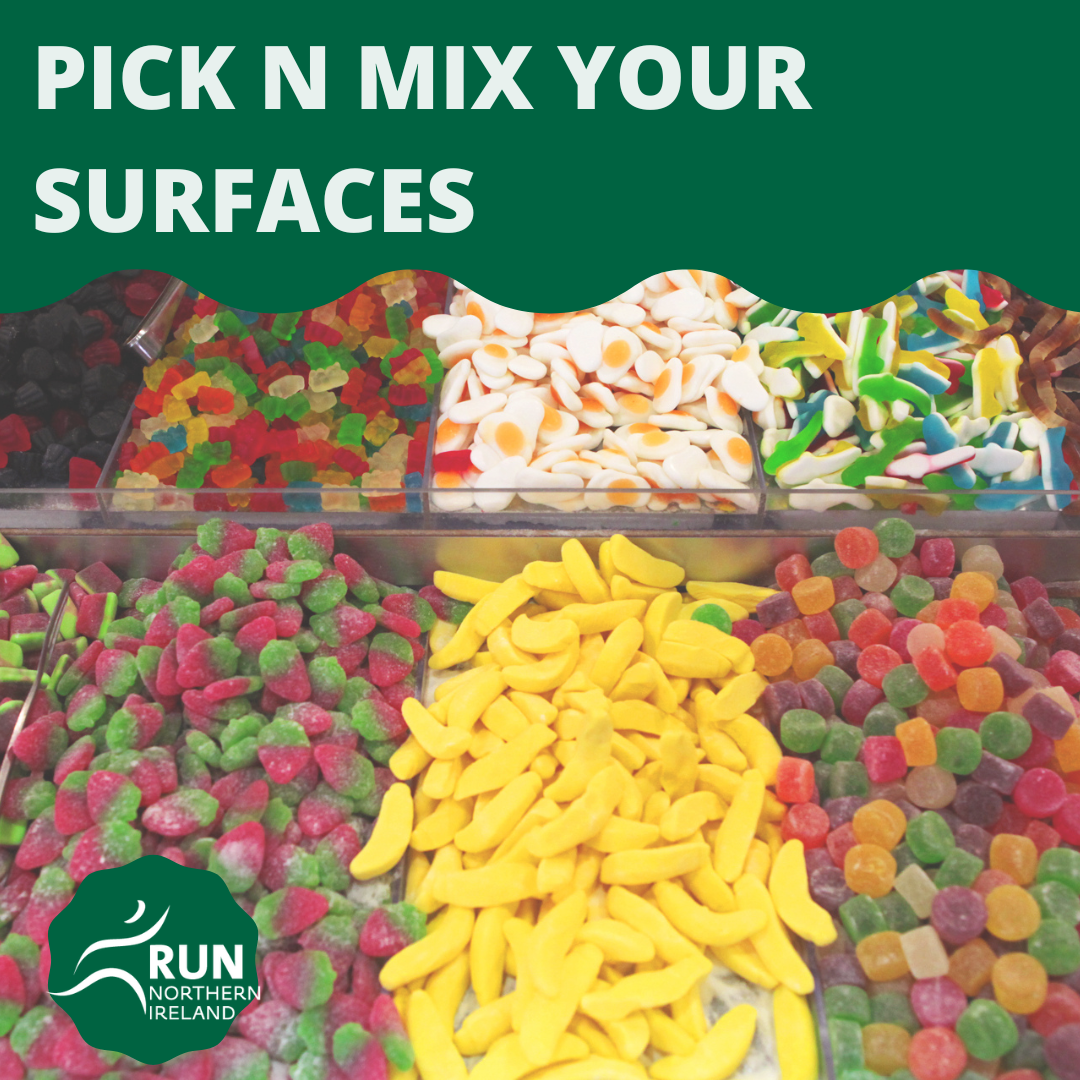Pick and Mix Your Surfaces
Most runners take part in events that are run predominantly on the road and whilst this is great for fast times, it is about the least forgiving of all surfaces, so even if you are training for a road race it is advisable to vary the terrain that you run on.
You can protect your joints from hard surfaces by enjoying off road running and at the same time enjoy the scenery through woodlands, along coastal trails and rivers etc. One of the benefits of running is to escape from everyday stress but running along busy roads can be stressful in itself so it's far better to get away from the crowds and out into the open. However, you should always run with someone else in lonely and remote places as well as carrying a mobile phone and some ID.
So what choices do you have?
Grass
If you are allowed to run around the perimeter of your local pitches this is the ideal place to do those runs that require you to do efforts within them, for example, 10 X 60 seconds fast. Running around the pitches and alternating 1 min hard with 1 min easy is far better than trying to carry this out on pavements and maybe having to cross roads when you are in the middle of a 60 sec effort. Alternatively you could find a local park for this session. The grass surface makes your muscles work harder but, if you are on a well-manicured pitches or park it will mean you can keep a good rhythm within your run.
Trails
Here in Northern Ireland we are blessed with trails perfect for running. Our industrial heritage has meant there are canal towpaths and disused railways that have been transformed into perfect trails for us runners. There are also many forests that are maintained by the Forestry Commission or National Trust with trails provided for runners, cyclists and horse riders. These are the perfect place for those long runs or threshold runs are all places that spring to mind that would be perfect venues for these sessions .Belvoir Park Forest, Belfast, Tollymore Forest Park Newcastle, Portglenone Forest, and Woodburn Forest Carrickfergus are all easily accessible forests you can check out and perfect for doing these sessions.
Synthetic Track
Most populated areas now have a local synthetic track and it is often the home of the local athletics club. Some are owned and maintained by the local authority, are open all the time and offer pay as you go. They usually allow a free taster night but you should consider joining the club to use the track on a regular basis. This surface is great for a session with short efforts as it is useful for monitoring your progress. You can measure the exact distance you run for each timed effort. The other benefit is that you will find company on this surface too, especially if you join the club. https://athleticsni.org/Clubs/Find-A-Club
Sand
An opportunity to shed your footwear and run barefoot! However, be warned that you should build up to this very gradually. If you go out for a run with no shoes after being used to wearing them you could wake up with very sore Achilles tendons the next day. By being closer to the ground you will put extra stretch on your Achilles every time you hit the ground. A sensible first run with no shoes would be 5 - 10 minutes and build up 5 minutes more each time. However, you can still enjoy the beach with shoes on and so do your normal volume. The beach offers choices: hard packed sand, soft sand, sand dunes. The sand dunes would be a great place to do your hill efforts although you may want to reduce the time as, not only are you building strength endurance by running uphill but also by sinking into the soft sand. The hard packed sand would be a great place to do your speed work but beware of the camber. The tilt of the surface towards the sea can put an uneven stress on your body. You should alternate the direction of each run within the session.

